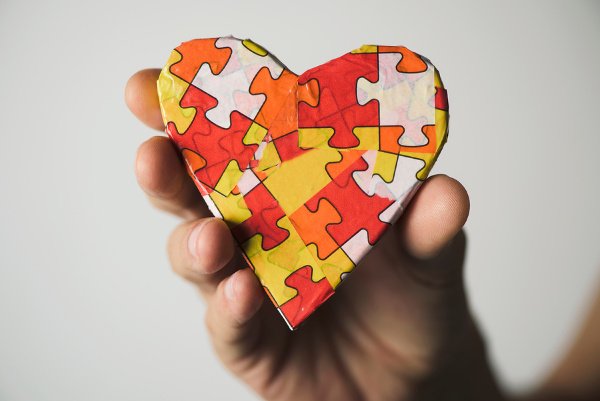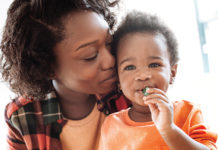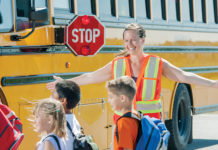
April 2 is World Autism Awareness Day, and if you’re looking for meaningful autism awareness crafts for kids that can be used to teach your students about autism and promote inclusion within the classroom, we’ve curated 13 ideas to inspire you! We’ve also included tips for teaching kids about autism, including a list of our favorite books and other ideas to help celebrate neurodiversity!
What is Autism?
Autism Spectrum Disorder (ASD) is a condition or range of conditions that presents challenges with social skills, communication and behaviors, and comes with its own set of unique strengths and differences for each diagnosis made. No two people with autism are the same, and there is no known cause. There are many different hypotheses and some of the current research is both fascinating and encouraging, but scientists can only agree on one explanation: autism is the result of a combination of genetic and environmental influences.
The symptoms of autism vary greatly from one person to the next, and treatment plans need to be tailored to an individual child’s abilities and needs. What works for one child might not work for another, and in the face of so many uncertainties and unknowns, parents of autistic children are often left feeling helpless, overwhelmed, and alone. Children with ASD can be completely nonverbal, have limited communication skills, or they may have no issues with communication at all but struggle significantly with other challenges, such as poor self-regulation, repetitive behaviors and slimming, sleep disturbances, anxiety and sensory processing sensitivities.
With autism diagnoses being handed out as frequently as they are, doctors, psychologists, and therapists need to do a better job of equipping parents with the tools they need to fully understand the challenges their child faces, and we need to do a better job of educating the general population on autism by celebrating diversity and encouraging inclusion.
What is World Autism Awareness Day?
World Autism Awareness Day is an internationally recognized day that encourages people worldwide to come together and speak out against discrimination, celebrate diversity, and promote inclusion of people with autism spectrum disorder. World Autism Awareness Day occurs on April 2nd each year, and many landmarks, buildings, and homes ‘light it up blue’ to show their support. Many communities organize autism-friendly events and activities to help raise awareness, understanding, and support of autism.
7 Tips for Teaching Kids About Autism
1. START THE CONVERSATION
The first step towards raising autism awareness is to talk about it. Organize an information session for your class, and reach out to autism parents within your school and/or community as they will have tons of information and ideas to help you.
2. DEFINE IT
Explaining autism in simple terms children can understand isn’t easy, but there are heaps of resources you can turn to online to help pull together age-appropriate information for your students. SheKnows has a fabulous autism definition for children that helps explain what the sensory sensitivities that often occur with autism might feel like:
‘Try using a simple explanation like this: Autism is a disorder that makes it hard for a person to deal with the world around them. A sound like the school bell ringing, which may not bother most kids, may sound like nails on a chalkboard to a child with autism. A tag in a T-shirt might feel like a terribly itchy sweater. The sunlight outside might feel like a flashlight has been just shined into their eyes. Autism is like walking around with your nails cut too short and your shoes on the wrong feet. Every. Single. Day.’
Of course, this only scratches the surface of autism and doesn’t really explain the social and emotional challenges children on the spectrum face, but it gives you an idea of how to break things down. Kids Health takes it a step further by explaining all areas of autism in simple terms, which you can read HERE.
3. FOCUS ON ABILITIES OVER DISABILITIES
Whichever way you choose to define and explain autism to your students, make sure to focus on abilities rather than deficits. This is especially important if there are one or more children with autism within your school community. Find something these children have in common with the other kids to help them relate to them better, and give them suggestions on how they can include these children throughout the school day – games they enjoy, topics they like to discuss, etc.
4. ENCOURAGE QUESTIONS
Children are curious by nature and they will probably have a lot of questions about autism, but they may not feel comfortable asking everything that is on their mind for fear of being rude or looking silly. A great way to encourage open and honest communication is to ask everyone to write a question down on a piece of paper and leave it in a cardboard box so you can do an anonymous Q&A session.
5. TEACH EMPATHY
While you don’t want the world to feel sorry for children with autism, older kids do have the capacity to empathize with others, and if they are encouraged to imagine what it would be like to walk in another child’s shoes, it may make them stop and think before excluding or teasing them.
6. CREATE AN AUTISM FACTS SHEET FOR KIDS
If your school is lacking adequate resources when it comes to explaining autism to children, there’s tons of literature you can access for free online. Print off some informational sheets that outline the important stuff (‘What is Autism?’, ‘What Causes Autism?’, ‘How Can I Help My Friend with Autism?’), and take it a step further by including specific things about the children with autism within your school and community. What are their strengths? What are their interests? What do they struggle with? If these children are verbal, encourage them to put together a list of things they wish their classmates knew about them but have trouble expressing. It may seem small, but it can go a long way in ensuring your students have access to the right information so they can better understand how they can help their peers with autism.
7. PURCHASE BOOKS ABOUT AUTISM!
There are tons of great books that explain autism to people of all ages. The trick is to find a selection that is age-appropriate for the audience you are trying to educate. Here are some selections we love:
-
- A Friend Like Simon – Autism: This is a wonderful book that works as an introduction to ASD children. It is an especially great picture book to read to a class who may have a new ASD child being introduced.
- We’re Amazing 1,2,3! A Story About Friendship and Autism: Part of Sesame Street’s autism initiative, this book allows Elmo to introduce his ASD friend Julia to Abby, explaining brilliantly how Julia does things a little differently.
- The Autism Acceptance Book: Being a Friend to Someone With Autism: This is a great book to teach autism to neurotypical children. It works as a conversation starter and a reminder to be compassionate, allowing children to imagine how ASD kids might feel.
- I See Things Differently: A First Look at Autism: This story book is geared toward teaching kids about autism and helping them understand it better.
- What About Me?: A Book By and For An Autism Sibling: This book was written by a 7-year old boy who explains the struggles and joys of being an ASD sibling.
13 Meaningful Autism Awareness Crafts for Kids
One of the best ways to teach children is through play, and there are lots of fun autism awareness crafts for kids you can organize in your classroom to help raise autism awareness. Here are 13 of our favorites!
Autism Awareness Heart Ornament | Summit Academy Schools
Autism Awareness Door Decorations | Lyric Journal Door
Autism Awareness Puzzle Piece Glyph Activity | Teachers Pay Teachers
Friendship Puzzle Piece Necklace | A Girl and a Glue Gun
Autism Awareness Bulletin Board Display | Mrs. D’s Corner
Puzzle Piece Snowflakes | Red Ted Art
Uniquely You Puzzle Piece Magnet Craft | All Kids Network
Jigsaw Puzzle Jewelry | My Crafts
Autism Awareness Frames | A Modern Day Fairy Tale
Autism Awareness ‘Light It Up Blue’ Puzzle Piece Activity | Teachers Pay Teachers
Piece of my Heart Craft | This Worthey Life
Jigsaw Puzzle Piece Bookmarks | A Room of Wonders
Puzzle Piece Flower Craft | The Pinterested Parent
Oh, and I have one last idea called ‘blowing bubbles for autism‘ which I found on SLP Talk with Desiree! It’s not a craft, but an awesome way to bring an entire school community together to have fun and raise awareness for autism!













